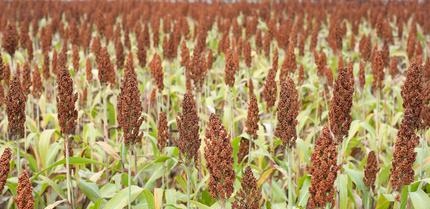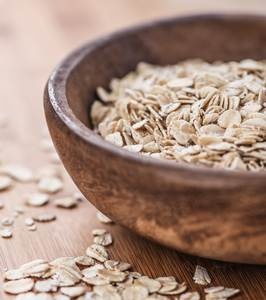|
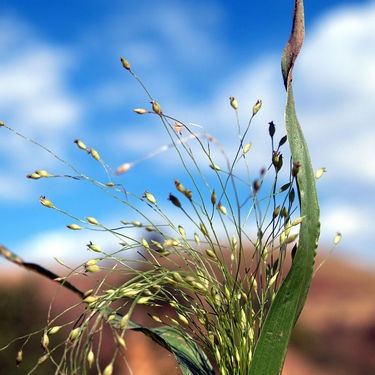 When buckwheat harvests began to become scarce, when they began to doubt whether it was worth sowing this culture further, they remembered millet. Millet in those years was sown from time to time. If winter crops died or spring bread failed, they were replaced with millet. When buckwheat harvests began to become scarce, when they began to doubt whether it was worth sowing this culture further, they remembered millet. Millet in those years was sown from time to time. If winter crops died or spring bread failed, they were replaced with millet.
And for this they called him a plant of random places. The grass of accidents. Millet saved the ruining economy in the steppe region. Why exactly in the steppe? Because millet itself is a native of the steppes.
Writer Mine Reed probably could not have written his stories with mustangs and cowboys if not for millet. Wild millet provided a solid forage base for the mustangs. Millet created prairie. Not one, of course. There were many other herbs as well. But millet was always present. Wild millet. The closest relative of the cultural. Millet - the builder and the South American steppe - pampas. And the South African steppe - Velda. The composition of herbs is changing. Millet remains.
So, they began to replace buckwheat with millet. And flax is millet. And wheat. The first harvests puzzled many. Some owners had grain bins bursting with grain, while others had empty bottom sections. But they sowed in the same black soil. They were even more surprised when they compared it with oats. He could be better or worse. But so that next to it is magnificent and worthless - this has never been seen. Millet looked exactly like this. Some could not boast. Others gave up and considered the work wasted.
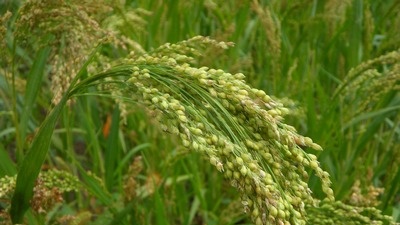
And the whole point was that they all sowed oats at the same time, remembering the proverb: "Get into the mud - you will be a prince!" Therefore, the oats grew the same for everyone. Millet did not obey the general rule. And those who sowed "into the mud" were often left with nothing. Therefore, they began to sow as they please. One earlier, the other later. And the most important thing here was to guess: when will spring open? When the warm days come. Millet is a native of the steppes, give it warmth, and “mud”, that is, moisture, is in second place for millet.
In general, millet has served well for the steppe strip. Under Soviet rule, its harvests increased so much that once a millet grower from Kazakhstan, Chaganak Bersiev, received 200 centners per hectare! Nobody in the world has received this either before or later. And when, during the war, the enemy seized the main buckwheat regions - Smolensk and Oryol regions, the steppe millet supported. We ate millet porridge with and without stew for all the long front years. And she never bothered. Even academicians were working on the millet problem. One of them, I. Yakushin, invented a completely simple technique that gave a tangible increase in yield. He would take sheaves of millet and shake them slightly. What was poured out, he first took for sowing. The harvest grew by a quarter more.

But let us return to those distant times when millet was not sown enough and it was called the grass of chance. Even at the beginning of the century, millet porridge was considered a delicacy, one might say, a delicacy. In poor families, it was prepared only for children. And at this very time, something incomprehensible began to happen with the millet. An inexplicable fact was discovered. Every year the groats suddenly became more and more attractive. Everything is brighter and more yellow. This is a perfectly ripened product of a fertile field. There were fewer and fewer white, matte grains. It seemed that the ideal climate for millet had arrived. At the same time, the porridge was getting worse. She began to taste bitter. Children complained of discomfort. The doctors found stomach catarrh and even more unpleasant diseases. The cattle fed the waste were also sick.
A special commission was created. What turned out to be? The best, first-class millet is made from the worst. From the immature. They just painted it. Sometimes they took a handful of millet - and a greasy yellow bloom remained on the palm. Than just paint! Some - with ocher, which covers the floors. Others chose a tighter paint to reach the middle of the grain. Chromic acid lead was used in Poltava.In Belgorod, no less poisonous crown - also with lead, and even with tin! 33 well-known firms were involved in the fraud. Meanwhile, whitish millet is no worse than yellow in taste and nutritional value.
And now, when millet has turned from a delicacy into one of the most accessible and cheapest cereals, many old women pour it on the streets to pigeons. At the same time, they know that in the old years, the love of pigeons for millet led to the development of an entire industry for special purposes. The events that will be discussed developed at the beginning of our century. It is difficult to say what was the impetus: either the depletion of the stock of poultry, or the craving for refined food, but only Europe was suddenly inflamed with the desire to replace the annoying chicken and duck meat with pigeons. And the pigeon industry was born.
Paris played the first violin. A special company bought one month old pigeons from Italy. We bought thousands. Every day a freight car filled with cages left for Paris. On the outskirts of Paris, on the outskirts of Ivry, skinny Italian pigeons were being cooked under the butcher's knife. To do this, they were fed food of their choice. The pigeons chose millet. It was steamed in barrels and distributed among the cages.
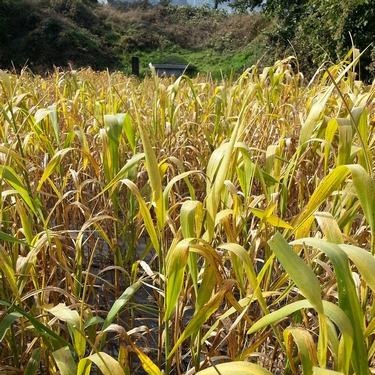
Chairman of the Russian Society of Poultry Breeders V. Goncharov, who stopped by in Ivry to learn from the experience, was surprised to see Russian letters on the bags with millet. Odessa brand! Parisians preferred Odessa millet to others as the best. However, it turned out to be not an easy task to preserve Russian cereal for pigeons. Every night thousands of Parisian rats stormed the storerooms. The company had to start a whole pack of fox terriers.
Of the numerous millet relatives, perhaps the most prominent cereal is mogar. I had never heard of mogar before until I got to the hospital. Instead of the usual millet porridge, we were given another. Its grains were smaller than millet and larger than semolina, and it tasted like a cross between the one and the other. We wondered for a long time what kind of porridge it was, happily eating it on both cheeks. This was the mogar. After that, I never met Mogar porridge again, but I would love to taste it again.
Even in the south, where it grows, not all southerners are familiar with the mogar. In 1903 "Rural Owner" received a letter from the reader N. Lesnikov. The reader complained that nothing worthwhile grows on his land. The site was unsuccessful - steep southern slopes. The sun's rays fall perpendicularly and burn any culture you sow. Is it possible to find a plant that does not burn out?
“There is only one plant,” the magazine replied, “which will withstand the heat of the Bessarabian sun in the southern squabble. This is a mogar. We do not know of another culture that would need so little soil moisture and would be able to withstand such a prolonged drought. "
Weeds like green millet compromise the millet clan somewhat. This herb is small. Never climbs as high as wheat or oats. Its stems stick out straight and rarely. More often they rise slightly above the ground or spread over it. Only the green sultan, unlike the grass, is long, thick and large.
And the grain in it is delicious, white, like crushed rice. Chickens and other birds prefer it even to ordinary millet. It happened that people cooked porridge too. And they even made pilaf.
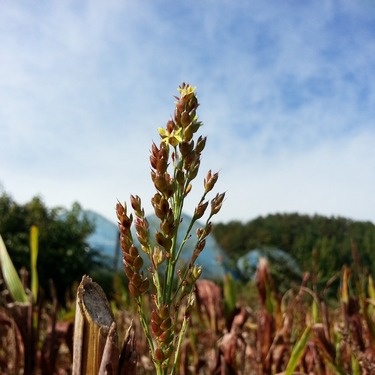
And yet, to this day, farmers consider it a burdensome weed and try to survive from their possessions. They even call it a contemptuous green mouse. However, there have been cases in history when mice were saved by farmers from ruin. The year 1891 comes to mind - the most difficult year for the Russian countryside. An unprecedented drought has hit the southern part of Russia. Hunger and death marched across the land. Unripe bread has dried up on the vine. Even the wild herbs were burnt out. And then the unheard-of happened. From under the twisted, blackened ears, from the thick of ossified dead straw, green mice made their way. He got up, as soon as the first rains fell. Everything had died by this time on earth. Only mice did not die. And since the wheat and rye roots no longer pulled its juices from the ground, they got to the small, tenacious millet grass.
No one believed in a miracle anymore, nevertheless it took on certain forms of a green sprout breaking through decay and destruction. The cattle went out into the abandoned fields and ate delicious and nutritious feed with pleasure. If not for the mice, the cattle would have come to an end. People also came. The panicles were threshed. They cooked pilaf. The great thing about this story is that the mice rose up in the first place on those fields that were poorly weeded. The same crops, which were kept in exemplary order, where the mice were weeded out, remained after the drought as grassy graveyards.
Another funny weed from the clan of millet grains is chicken millet. Once in a vegetable garden or field, this creature is firmly and permanently entrenched there. Pulling him out of the ground is not an easy task. If you pull it harder, the greenery will break off, and the roots will remain in the ground. Just like wheatgrass.
Unlike wheatgrass, this grass is not gray, but bright green. And not an ear of hers, but a panicle, all bristling with a mass of thorns, like a hedgehog, which is why it is also called a barnyard. It would seem that the birds should be embarrassed by such a strong weaponry of the barnyard. They don't really care. At least domestic chickens. Having penetrated into the garden and met "their" millet, chickens forget about other delicious food. An even greater gravitation towards chicken millet is shown ducks... Where the hedgehog-like grass grows along the banks of streams and swamps, ducks, greedy, fill their stomachs with millet grain almost to the top. Very little space is left for the rest of the feed. Professor V. Generozov, a great connoisseur of waterfowl, was so carried away by this plant that he advised sowing a barnyard in our wintering grounds for migratory birds - in the Colchis bogs near the city of Poti, in the warm backwaters of the Lenkoran coast.
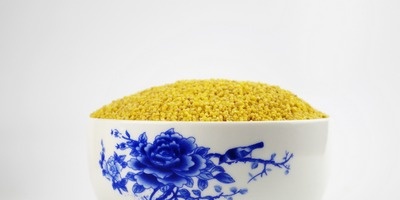
In recent years, gardeners have dramatically changed the way they look at chicken millet. If earlier they tried to get rid of it, now they do just the opposite. The annoying weed turned out to be the perfect "instrument" to signal the start of sowing and planting in gardens. Muscovite E. Polyushkin noticed that tough sprouts of chicken millet begin to break out of the ground only when it has warmed up reliably and the temperature has crossed over 0 ° irrevocably. The shoots of the barnyard are a guarantee that there will be no frosts. At least near Moscow.
The smallest, most ordinary-looking of the millet cereals is the Fragrant Spikelet. Its inflorescence looks like a ginger cockroach worn on a straw. In northern meadows, it crumbles in masses, if the soil is thin, barren.
On fatty humus, it is almost invisible. Livestock in the meadows bypasses it because of the pungent smell.
But the owners who mow hay for their wards, the aroma of the Spikelet seems incomparable. Apparently, for this reason, the Rural Owner magazine once gave this advice: if you want to introduce Kolosok into the seed mixture in meadows, enter it. But not for the animals, but for the hay buyers. If hay is being prepared not for sale, but for oneself, then it is absolutely unnecessary. Comments, as they say, are unnecessary.
A. Smirnov. Tops and roots
|
 When buckwheat harvests began to become scarce, when they began to doubt whether it was worth sowing this culture further, they remembered millet. Millet in those years was sown from time to time. If winter crops died or spring bread failed, they were replaced with millet.
When buckwheat harvests began to become scarce, when they began to doubt whether it was worth sowing this culture further, they remembered millet. Millet in those years was sown from time to time. If winter crops died or spring bread failed, they were replaced with millet.





































